In 2022, how will NFTs and the metaverse reshape luxury brands and the fashion industry?
Original Title: “The Next Year: Building Brands with a Metaverse Mindset”
Translation/Compilation: Nianqing, Chain Catcher
How will fashion develop in the era of digital existence?
Imagine that the latest fashion on the cover of Vogue is no longer a unique piece that celebrities and wealthy individuals scramble to buy at high prices, but rather an ordinary item that you can "wear" and post on social media the next day. NFT fashion is making everything possible and is also reshaping people's perceptions of clothing and fashion.
Morgan Stanley recently made a prediction: the metaverse will provide over $5 trillion in opportunities for the luxury and fashion industry over the next decade. So, how far has this easily overlooked massive market developed?
Recently, the Business of Fashion and McKinsey & Company jointly published an in-depth report on the global fashion industry, which conducted a thorough analysis of the trends in NFT fashion. Chain Catcher translated this document and provided a brief overview of the DressX, The Dematerialised, The Fabricant, RTFKT, and Unxd NFT fashion projects mentioned in the text at the end. Currently, these five are among the leading crypto-native fashion brands in the industry.

As the digital environment matures, the world is shifting from a linear and transaction-centered space to a multidimensional, experiential, and collaborative virtual world. The younger generation, proficient in new technologies, is spending more and more time on social media, gaming, and virtual reality, establishing diverse identities in the process. As pioneers, virtual fashion and NFT forms of digital assets provide consumers with new ways to shop, exchange goods, and utilize these identities.
As consumers' online time continues to grow, hyper-interactive and creative digital environments have naturally evolved. By 2020, Generation Z spent an average of 8 hours a day on screens. When the global COVID-19 lockdown occurred, face-to-face social interactions became a luxury, making the virtual world more appealing, allowing people to interact with others and build communities.
Digital spaces are becoming more vibrant, with some consumers igniting a "digital campfire" around which they can connect, converse, and collaboratively create with like-minded friends. The rising popularity of virtual spaces has also given birth to a new generation of digital fashion creatives, with more brands entering the hot "metaverse" to engage users in more creative interactions and view it as an opportunity to unlock new value streams.
"Now there are more and more 'second worlds' where people can express themselves, but currently, we underestimate people's enthusiasm for expressing their personal values through virtual products and character images in the virtual world," said Robert Triefus, Executive Vice President of Brand and Customer Engagement at Gucci, revealing that the "Gucci Garden" in the Roblox virtual world has attracted a total of 19 million visitors.

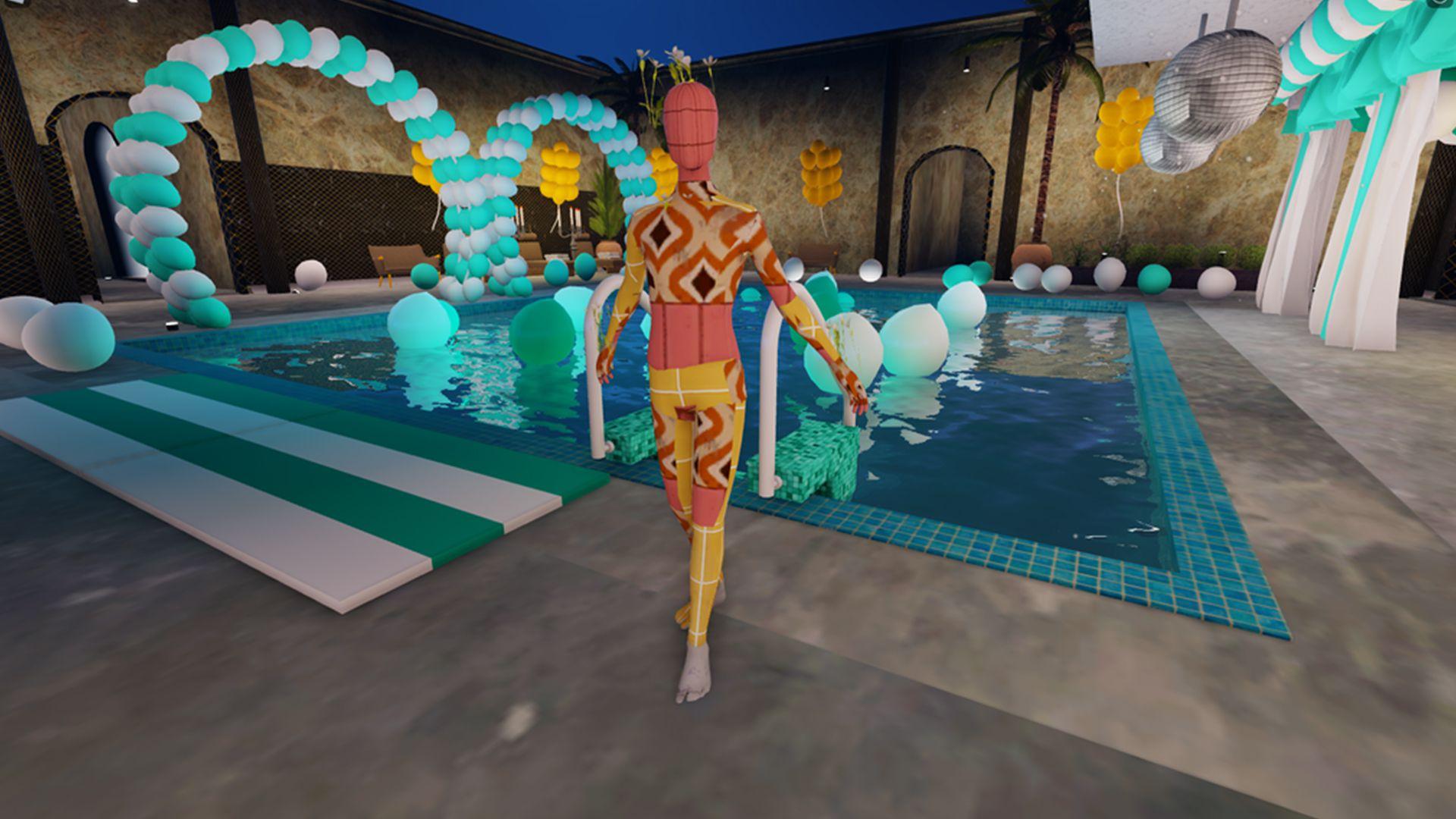 Gucci Garden in Roblox, where players can purchase and collect items from the Gucci virtual store
Gucci Garden in Roblox, where players can purchase and collect items from the Gucci virtual store
The $176 billion gaming industry attracts over 3 billion players worldwide and has a long history of community building. Meanwhile, with the influx of investor funds, the metaverse is becoming a major business. Epic Games raised $1 billion in April 2021 to accelerate the construction of social experiences in the metaverse.
As gaming increasingly becomes an extension of the real world and public participation deepens, gaming has become a primary target for fashion brands, most of which collaborate with gaming companies by designing virtual fashion assets. For example, Ralph Lauren partnered with the Korean social network and virtual avatar simulation app Zepeto to create a virtual fashion collection, allowing users to dress their avatars with exclusive products or "skins" that change their appearance. Gucci has created digital assets for gaming platforms like Roblox, Pokémon Go, and Animal Crossing.
 Ralph Lauren's NFT fashion collection created in collaboration with Zepeto
Ralph Lauren's NFT fashion collection created in collaboration with Zepeto
Some brands are looking even further ahead. After launching its 2021 Fall/Winter collection in the form of a mature video game, Balenciaga partnered with gaming giant Fortnite, allowing users to purchase virtual clothing and physical products in the game, creating a groundbreaking cross-dimensional collaboration. Opportunities in gaming are diverse and extensive, providing a platform to attract young consumers. Utilizing in-game goods further allows brands to monetize digital assets, and paying for enhanced experiences will become a norm.
Virtual fashion is gaining new momentum in the digital environment. "Gamers make themselves more famous by purchasing skins in games," said Daria Shapovalova, co-founder of DressX, which has collaborated with over 100 digital fashion product designers and estimated that the potential market value of the entire digital fashion industry could reach $31 billion. "In addition, we have two potential user groups. First, many millennials have quickly embraced the concept of digital fashion and have become active luxury shoppers who want to enhance their social media image with new things. Secondly, Generation Z users on platforms like Snapchat or TikTok, where video is becoming the primary communication tool rather than still images."
In fact, for some consumers, digital fashion is a natural extension of social media like Instagram and Snapchat. Simon Windsor, co-founder and co-managing director of Dimension Studio (a studio that creates virtual worlds and avatars for film, television, virtual reality, augmented reality, and the metaverse, and has collaborated with Balenciaga to develop video games), said, "We are at a turning point in this new era… it is beginning to change the very meaning of fashion itself."
In addition to social media and gaming, artificial intelligence (AI) and augmented reality (AR) technologies provide more opportunities for new business models like virtual fashion. The online fashion wholesale platform Ordre uses 360-degree view technology to showcase seasonal collections through online showrooms, providing supplementary channels for managing luxury wholesale networks. Elite World Group and designer Tommy Hilfiger have recently collaborated on various virtual projects, including models walking on a 3D virtual runway.
Over the past year, what has excited and stimulated people the most is NFTs. NFTs are unique crypto assets whose authenticity and ownership are verified on the blockchain and are bought and sold in the metaverse, usually using cryptocurrency. The uniqueness of NFTs means their value can skyrocket: an NFT created by digital artist Mike Winkelmann (also known as Beeple) sold for a record $69.3 million at Christie’s auction house in 2021. The NFT platform OpenSea surpassed $1 billion in sales in the first seven months of 2021.

NFT supporters believe that the NFT boom is not a fleeting phenomenon. "This will fundamentally change digital ownership, creative structures, the creative economy, and even our perception of money," said Karinna Nobbs, co-CEO and Chief Experience Officer of the NFT market The Dematerialised. "This is bigger than the internet."
In the fashion sector, NFTs have a wide range of use cases, from product certification (referring to "product passports") to collectible items with their own copyrights. As consumers seek to collect and invest, digital fashion creators like The Fabricant, DressX, and RTFKT are looking for audiences for digitally certified clothing through NFTs. Meanwhile, some companies are leveraging the consumer stimulus brought by NFTs by trying alternative participation models: Adidas collaborated with The Fabricant and model Karlie Kloss to launch a competition for creators to make their own NFT versions of the WindRdy parka jacket, attracting headlines.
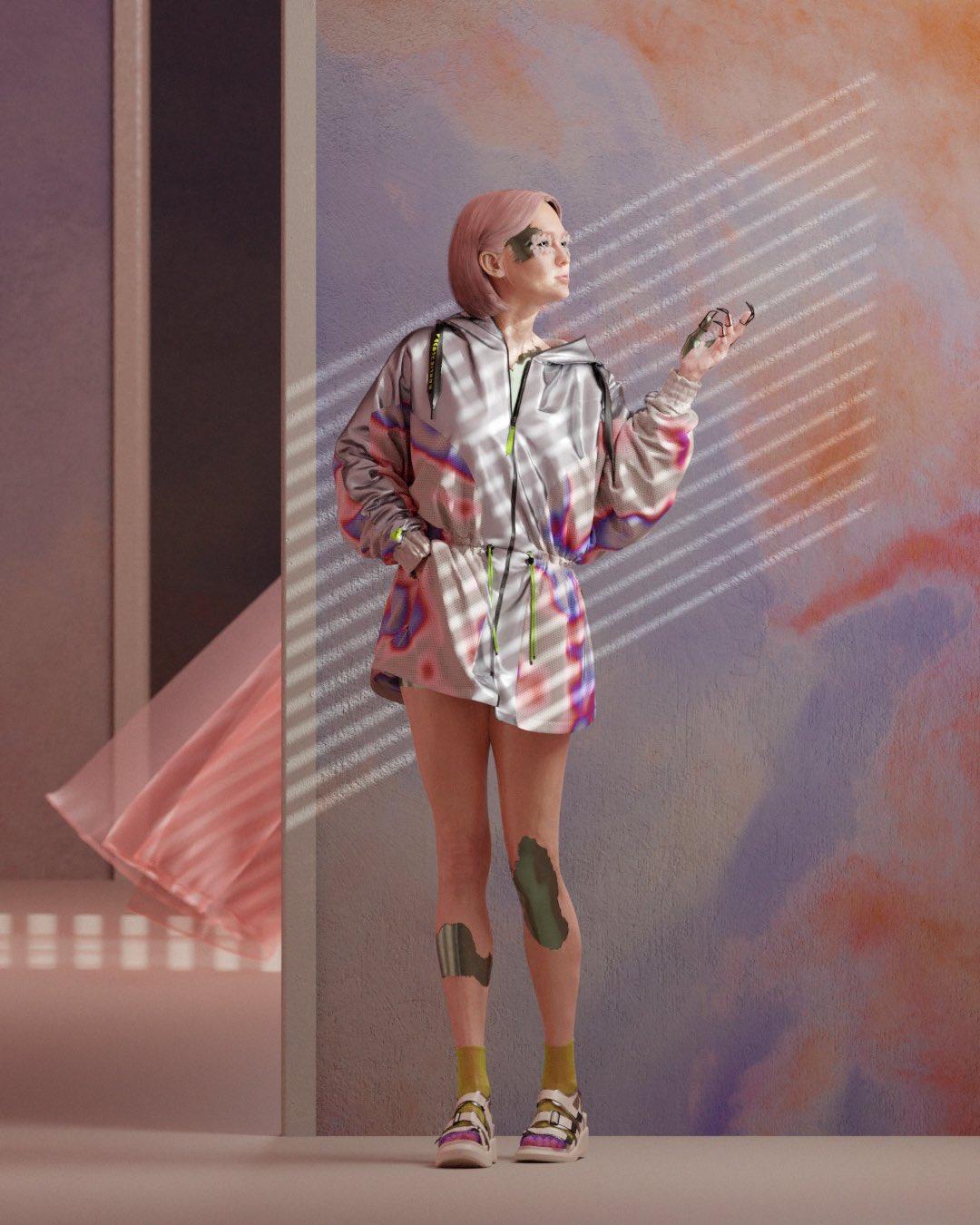 Winning design of the Adidas and The Fabricant co-branded jacket NFT design competition
Winning design of the Adidas and The Fabricant co-branded jacket NFT design competition
In 2021, a wave of NFTs swept through luxury players, often through the gaming sector. To celebrate its 200th anniversary, Louis Vuitton launched a collectible NFT video game, partially designed by Beeple. The game includes NFT art, and players can earn these artworks in a story related to the journey of the brand's founder. Burberry created pet gummy toy NFTs that exist on the blockchain in the Blankos Block Party game. Limited edition Burberry Blanko Sharky B NFTs adorned with the Burberry TB summer monogram can be purchased, upgraded, and sold. This collaboration also includes brand game-internal NFT accessories, including jetpacks, arm patches, and pool shoes.
 Screenshot of the NFT game designed by Louis Vuitton
Screenshot of the NFT game designed by Louis Vuitton
 Pet gummy toy NFT created by Burberry in the Blankos Block Party game
Pet gummy toy NFT created by Burberry in the Blankos Block Party game
In addition to gaming, Farfetch (a global fashion shopping platform) has also collaborated with the digital fashion platform DressX. Dolce & Gabbana partnered with Unxd (a curated marketplace for digital luxury goods and fashion) to create the first nine-piece NFT collection sold alongside physical fashion.
Although digital fashion often carries a hint of marketing hype, in fact, this industry can generate considerable revenue. The Dolce & Gabbana collection generated nearly $5.7 million in sales. Nevertheless, the opportunity to make money may depend on the limited editions of NFTs and people's psychology of scarcity, as well as the security of authentication and the community-building potential they offer. Luxury and streetwear brands are most likely to lead the trend.
Undoubtedly, leaders in the fashion industry are very interested in the potential of virtual fashion.
"We always emphasize to collaborating brands that NFTs are experimental and may not always work, and we cannot guarantee the results," said Amber Slooten, co-founder and creative director of The Fabricant. The Fabricant is a digital fashion company that helps brands create their own virtual products and has collaborated with brands like Adidas, Marques Almeida, and Buffalo London.
 *The Fabricant's *Iridescence Digi-Couture dress NFT, priced at $9,500*
*The Fabricant's *Iridescence Digi-Couture dress NFT, priced at $9,500*
While there is much hype, caution is also necessary. Concerns arise regarding the environmental impact of blockchain technology underlying NFTs, especially the energy consumption involved in verifying transactions. Cybersecurity is also a potential issue, with counterfeiting and security breaches posing significant threats. Recently, the official website of artist Banksy was hacked, resulting in a collector paying £244,000 ($334,000) for an NFT counterfeit.
Ken Seiff, managing partner of Blockchange Ventures, a venture capital firm investing in early blockchain technology, said: "Those who believe that NFTs or more broadly blockchain won't cause significant upheaval in the next five years have certainly forgotten the historical lessons the internet has taught us."
At the very least, fashion's foray into the metaverse provides new avenues for consumer participation, offering consumers more immersive experiences and stimulating new desires and interests.
Looking ahead, as more fashion brands seek differentiation and initiate creative experiments, discussions around NFTs will continue to heat up. Consumers will also become more interested in digital fashion. Furthermore, they will seek opportunities for co-creation and hope that brands engage with digital assets in ways inherent to the spaces they inhabit, rather than through repetitive cross-channel content.
Crypto fashion still requires significant investment, experimentation, and new narratives. Brands need to have strategic thinking and a willingness to develop partnerships, utilizing various talents to provide high-quality content internally or through third-party collaborations. On a stage characterized by significant hype, finding business cases that can stimulate inspiration while maintaining brand image is worthwhile.
To this end, it may be necessary to adopt a new perspective on return on investment, focusing on less measurable benefits. In summary, risks should not deter them from entering this rapidly growing digital world.
Further Reading:
RTFKT
RTFKT is an NFT fashion and collectibles startup founded in 2020. The name is derived from its phonetic similarity to the English word "artifact," representing its brand philosophy of redefining the boundaries between physical and digital value. The team utilizes the latest gaming engines, NFTs, blockchain authentication, and augmented reality to create virtual products and experiences.
In February 2020, a photo of Elon Musk wearing a pair of CyberTruck-style sneakers went viral online. These sci-fi-inspired sneakers, named Cybersneaker, were synthesized by the RTFKT team. RTFKT later auctioned these NFT sneakers on the NFT trading platform SuperRare for 30 ETH, which at one point soared to 65 ETH.
In December of this year, RTFKT was acquired by Nike. Nike President and CEO John Donahoe mentioned that this acquisition is another step in accelerating Nike's digital transformation, enabling the company to serve athletes and creators at the intersection of sports, creativity, gaming, and culture.
Related Reading: “What is RTFKT, the Crypto Streetwear Brand Acquired by Nike?”
UNXD
UNXD is a digital luxury marketplace supported by the Polygon network, created by the team behind Vogue and WIRED, focusing on creating and curating significant digital cultural moments. UNXD's offerings include NFTs from the luxury, cultural, and physical worlds, aiming to bring the "tangible" into the NFT space, starting with intertwining the digital and physical worlds. Previously, the first NFT collection from luxury brand Dolce & Gabbana was auctioned on the luxury marketplace UNXD.
Next, UNXD will collaborate with Decentraland to host the first Metaverse Fashion Week from March 24 to 27, 2022, which will include runway shows, pop-up shops, exhibitions, and parties.
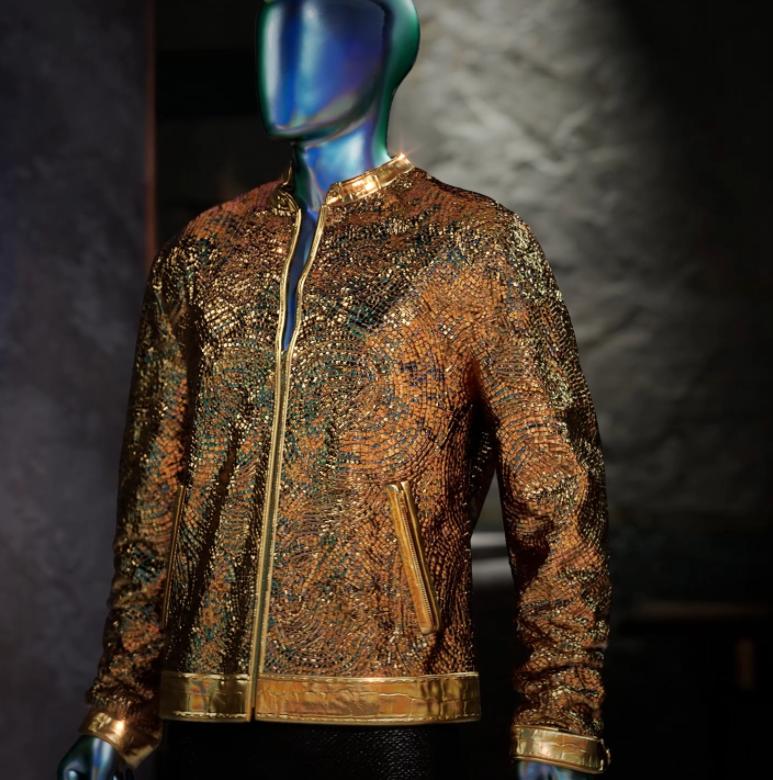 The first NFT collection of clothing from Dolce & Gabbana on the UNXD platform
The first NFT collection of clothing from Dolce & Gabbana on the UNXD platform
DressX
DressX is a U.S. virtual fashion platform founded in August 2020, which has collaborated with numerous designers and brands to allow them to create and trade various virtual fashion products on its platform. DressX completed a $2 million seed round of funding in July this year, led by investment funds The Artemis Foundation and Alpha Edison.
After purchasing their favorite virtual clothing NFTs, consumers need to upload a photo of themselves. After a processing time of 1 to 2 days, DressX will replace the original clothing in the consumer's photo with the purchased virtual clothing. Additionally, buyers can receive a certificate of authenticity.
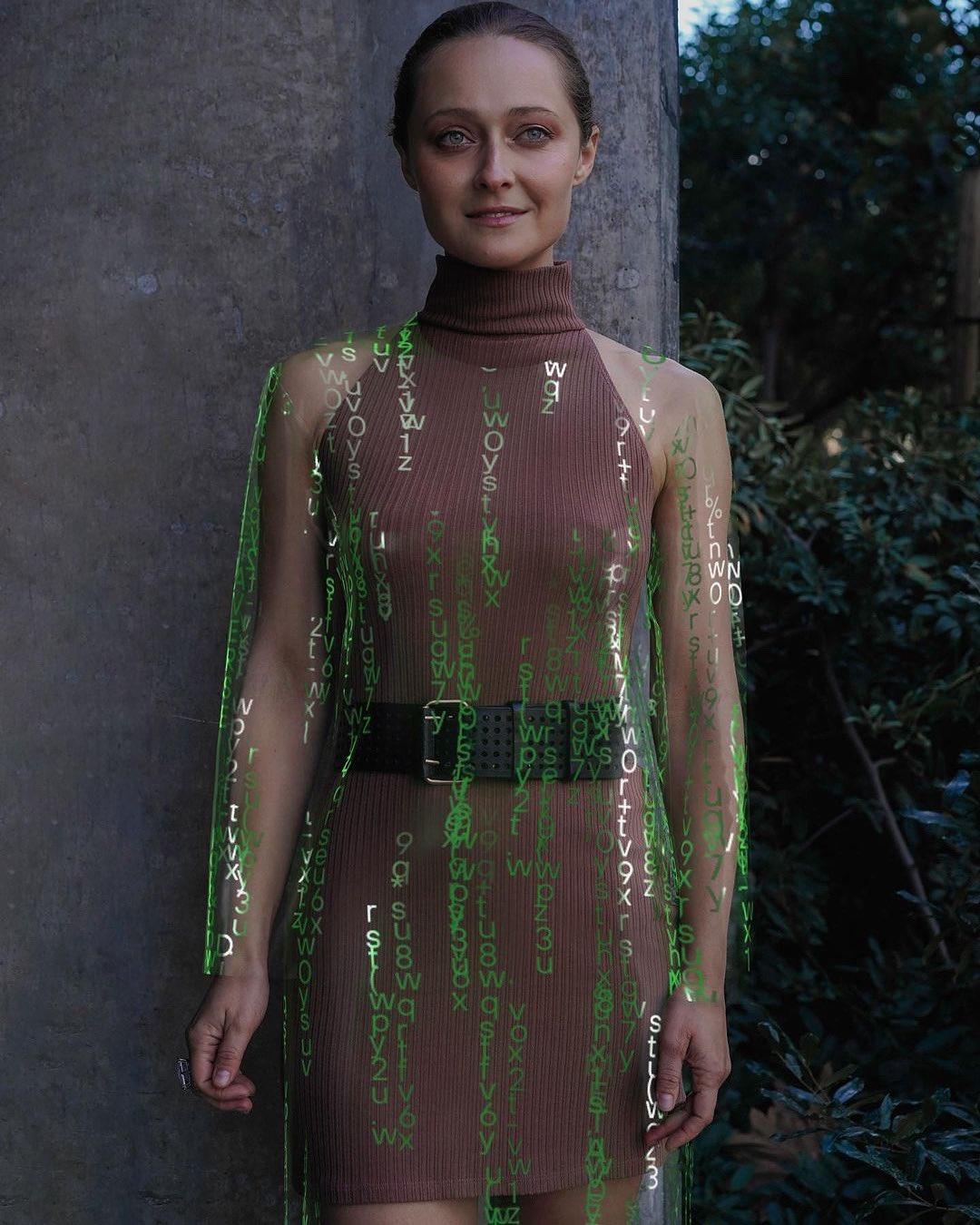 NFT fashion designed by DressX
NFT fashion designed by DressX
The Dematerialised
The Dematerialised is a digital fashion company aimed at integrating and nurturing the emerging digital fashion ecosystem, providing viable new revenue streams and intrinsic experiences through a Web3 marketplace, and creating verifiable virtual goods. The ultimate goal is to onboard brands, supporting them in transforming real-life designs into 3D digital designs and turning brands into digital manufacturers.
In September this year, the Ethereum application network project LUKSO launched "Old Buddha" Karl Lagerfeld doll NFT collectibles on The Dematerialised. This NFT can be updated with fashion outfits for the figurine based on subsequent releases of digital wearable NFTs.

The Fabricant
The Fabricant is a decentralized digital fashion company founded in 2018, building a decentralized wardrobe. It has collaborated with brands like Adidas, Marques Almeida, and Buffalo London to create NFT fashion, showcasing the immense creative possibilities of digital fashion and aiming to provide fashionable clothing for all metaverse citizens.
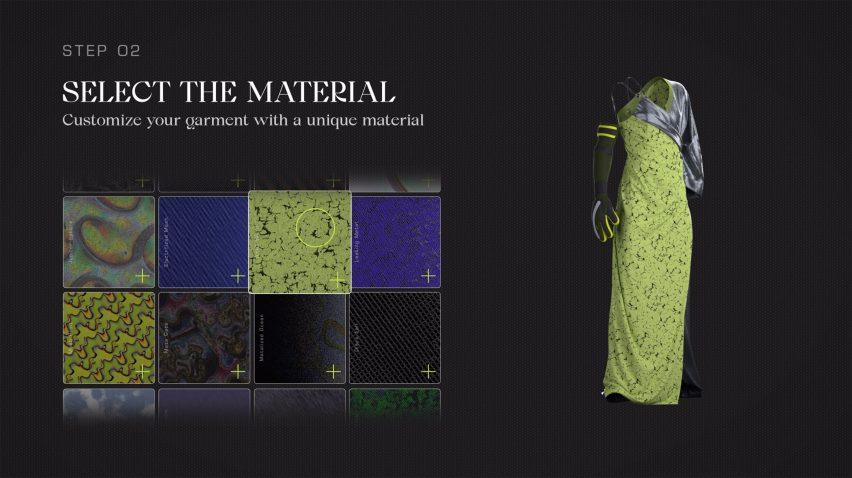 On The Fabricant Studio, users can customize clothing using exclusive digital fabrics
On The Fabricant Studio, users can customize clothing using exclusive digital fabrics
The Fabricant launched the online design platform The Fabricant Studio in November this year, where users can create exclusive virtual clothing. Each new co-creation is minted on the Flow blockchain. Users can not only trade and wear their creations in metaverse games like The Sandbox but also generate personal fashion photos.











